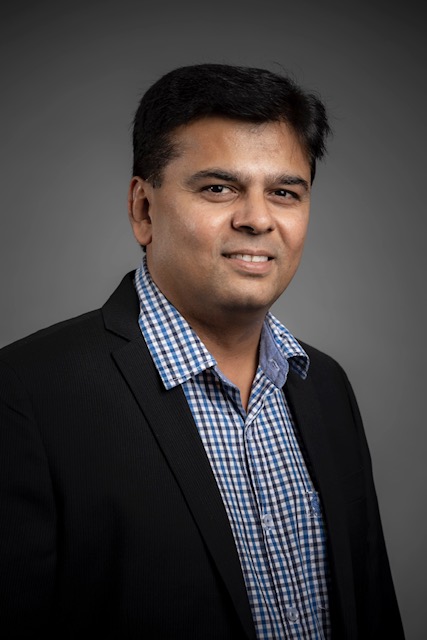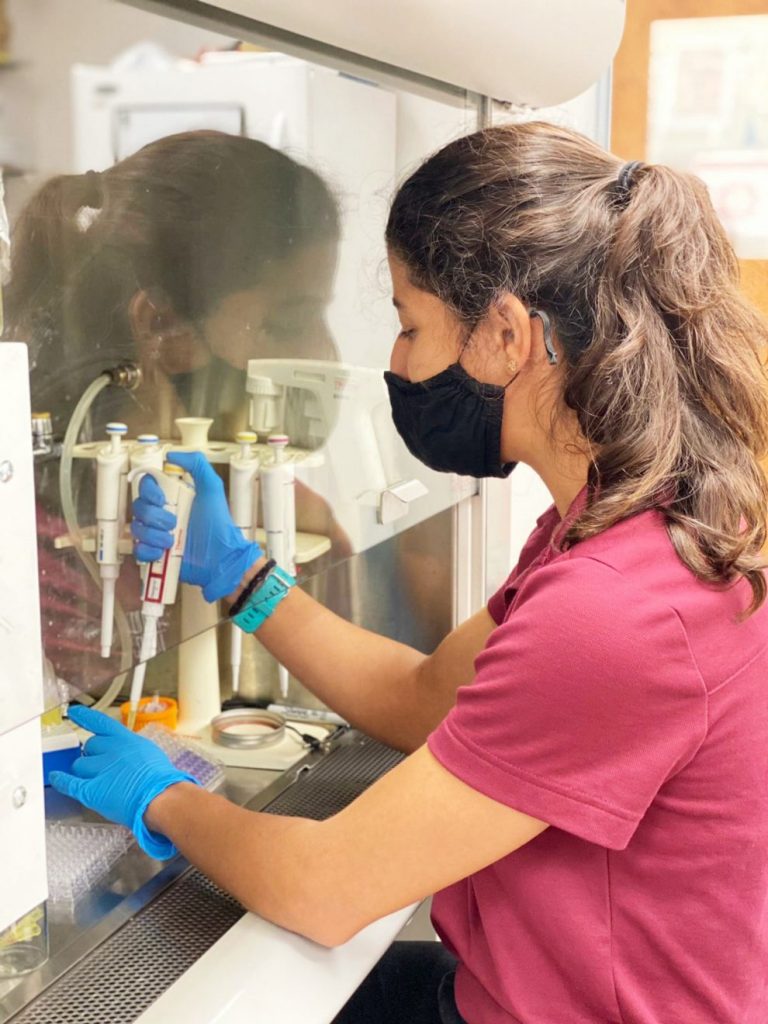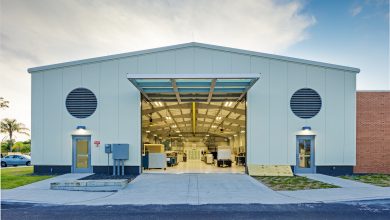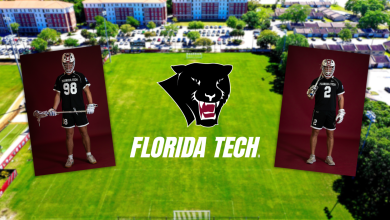Q&A: Vipuil Kishore Stands For … Progress
His Biomaterial and Tissue-Engineering Research Ultimately Aims to Impact Human Health for the Better
This Q&A is part of a series highlighting Florida Tech faculty, their research and their impact, which takes root on the Space Coast and extends around the globe. For it is not coincidence that brings our stellar faculty members to Florida Tech. It’s passion. Be it landing on Mars or restoring lagoon health, curing illness or protecting personal information, their passions shape our community and create powerful connections among the university, local industries and the world beyond. Faculty research isn’t just part of the job; it’s what they believe in—what they stand for. Exploration. Innovation. Progress. Research for the benefit of all humankind.
You probably behave differently when you are in a classroom versus at home versus in a restaurant. That is because environment influences behavior. It is true for humans, but can the same be said for cells? That is what Dr. Vipuil Kishore‘s research is focused on.
Dr. Kishore, a biomedical and chemical engineering and sciences associate professor, has spent the last decade developing new biomaterial strategies and tissue-engineering approaches for potential applications in repair, replacement and regeneration of diseased or damaged tissues.
He knows that when it comes to academic research, progress equals success. Every experiment he conducts, journal paper he writes and researcher who cites his work is one step closer to finding biomedical solutions to unresolved clinical problems like anterior cruciate ligament (ACL) reconstruction, diseased bone tissue, Alzheimer’s disease and nonhealing chronic wounds. His goal: contribute to developing new treatments that will directly impact human health for the better.

Give us a broad overview of your research, put simply.
My research focuses on developing biomaterial-based strategies for tissue-engineering applications. When asked to explain in simple terms, I describe it like this: We, as human beings, can sense our surroundings and change our behavior. For example, when you are at work; you can sense your environment, and you have a certain demeanor and a certain behavior that goes with that. Once you go back home and you are with your family, you can sense your environment is much more relaxed, and you change your behavior. The working hypothesis in my Functional Biomaterials and Tissue Engineering Lab is, can the cells do the same?
Meaning, if we provide an environment to the cells, will the cells sense that environment and change their behavior? So, we create biomaterial scaffolds—the environments we are talking about that are temporary structures to hold the cells—aiming to mimic the native tissue in terms of composition, mechanics and structure. These biomaterial properties have been shown to have a profound effect on how cells respond. My lab aims to develop biomaterial scaffolds that are like the native tissue and investigate how cells respond to the biomaterial cues with the goal of controlling and directing cell function for a specific tissue of interest.
Interesting. What are the potential applications for this research?
In my lab, we employ different processing methods to make collagen-based scaffolds. We prefer collagen because it is the most abundant protein in the human body and is present in many tissues, including bone, tendons, ligaments, blood vessels and cornea. Since we would like to match the environment and properties of the native tissue, collagen as a biomaterial is an ideal choice for us. Once the collagen scaffolds are fabricated, we add cells to the scaffold and investigate cell response to the scaffold properties. The combination of scaffold and cells make a graft, which can go into the patient for a specific use, like replacing a diseased or damaged site in the bone.
Let me give you specific applications of my research by briefly explaining some of the key projects that are currently ongoing in my lab. I have a National Institutes of Health grant to 3D-print artificial ACL-like scaffolds that match the composition and mechanical properties of native ACL tissue. In this project, we use collagen-based inks to 3D-print ACL-like scaffolds for use in repair or reconstruction of ACL injuries, which are very common in athletes and the elderly, but there is no cure for it yet.
Lately, I have started working on developing in vitro brain models to understand diseases, like Alzheimer’s, for instance. As people age, the brain’s extracellular matrix—which holds the cells—is known to change mechanically and compositionally. We are hypothesizing whether these changes trigger the onset of Alzheimer’s disease. And if we find that it does, then we can develop interventions to prevent the changes from happening and thereby come up with a potential treatment for Alzheimer’s disease.
I also have other projects in vascular tissue engineering, corneal repair and wound healing—but the premise is all the same: make biomaterial scaffolds that are similar to the tissue of interest, and then work with cells to understand how they respond to the scaffold environment. Focus can keep changing, depending on the students you get, their interest levels and the results you get. If the results are promising, then we continue to work on it. If the results are not so promising, we investigate the potential causes and develop new strategies to progress on the project.
Who else is involved in the research—students, faculty, other collaborators?
Since starting at Florida Tech, I have graduated seven master’s thesis students and one Ph.D. student, and a second Ph.D. student is graduating at the end of this year. They have basically been the workforce in my labs. We have published a lot of the work in very good, high-impact journals in the field, and the students are the first authors on the published papers.
I also collaborate with a few faculty members here, at Florida Tech, including Dr. Christopher Bashur, whose background is very similar to mine but with a different focus, and Dr. Linxia Gu, who recently joined Florida Tech’s biomedical engineering faculty, and we have complementary expertise.
Outside of Florida Tech, I collaborate with professors at other universities, but I also collaborate with the industry. Recently, I have been working with a newly established company called Humabiologics in Phoenix, Arizona, that markets human-derived collagen biomaterials. Prior to this, we have always used animal-derived collagen, mostly from cows or pigs. Due to my expertise with collagen-based materials, I have worked on consulting projects to test and characterize Humabiologics’ materials.
Yes, collaboration is important. What about in the local community? Does your lab do any outreach there?
I would love to do more of that. In my proposals to the National Science Foundation, I have proposed programs that cater to the local K-6 students, as well as middle and high school girls. I would like to carry out workshops, like a “plant the seed” workshop to show, for example, how a 3D printer works or how cells look under a microscope—just to raise their levels of curiosity.
And then, I have worked with high school students in my lab. One student from Westshore was part of my lab for about a year, doing her science fair project that did very well. She actually won numerous awards, including a scholarship from Florida Tech.
So, I do recruit the local students, when possible, to work under my mentorship and under the guidance of graduate students to get hands-on experience in my research lab.
Why is Florida Tech a good place to conduct your research?
Biomedical engineering is a relatively new and fast-growing program at Florida Tech. We have hired, and continue to hire, very good faculty, so there is a number of opportunities to work on collaborative projects. Then, I’m sure you know about the new Health Sciences Research Center being built on Florida Tech’s campus. The biomedical engineering program will move to the new building, which will have all the amenities to perform high-quality research. The research infrastructure and collaborative opportunities we have here are optimal for carrying out the work that I do.
In general, since biomedical engineering is related to human health, it is an attractive option for students. It excites them because they want to work on something that is going to make a difference. And it is not just the medical side of it; there is the engineering aspect, as well. The combination of engineering principles with applications in the medical field prepares students for medical school but also careers in the industry or academia. It opens up quite a few options.
While I’m told there is rarely the “Ah-hah!” moment as it is often depicted in Hollywood, have you had any significant breakthroughs in your research throughout the years?
In academia, we thrive on publishing our significant breakthroughs and findings in high-impact journals so that we can get the word out, and that’s how the field progresses. Essentially, with each new finding and journal publication, you are filling a toolbox that enables researchers in the field to build on to the next step. Think of it this way: For a given clinical problem that does not have any good cure, the toolbox needed to fix it was initially empty. Then, people in this field, like me, work with their own ideas and their own approaches to come up with potential solutions to solve the problem. Each time new findings are made and the results are published, we are adding one more tool to the toolbox. So, while individual researchers may not come up with a cure, collectively, we can equip the toolbox to bring solutions closer to the clinic. Together, the scientific community is working to come up with new therapies for diseases that do not have a cure, like cancer, for example, and we only need one efficient solution.
Essentially, with each new finding and journal publication, you are filling a toolbox that enables researchers in the field to build on to the next step.
Dr. Vipuil Kishore, associate professor, Biomedical and chemical engineering and sciences
Ultimately, what is your goal for your research?
Ultimately, my goal is to be able to make a positive impact on human health. I would like to continue to develop innovative biomaterial-based solutions and publish new findings in high-impact journals. In addition, I would like to bridge the gap between my academic research lab and industrial collaborators and work on developing clinically relevant products that have a direct impact on human health.





